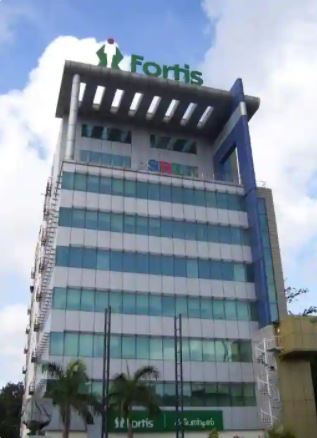Video Assisted Thoracoscopic Surgeries Treatment in India
treatment
starting from
Introduction
In the world of modern medicine, the field of surgery has witnessed remarkable advancements over the years, and one such groundbreaking development is Video Assisted Thoracoscopic Surgery (VATS). This minimally invasive surgical technique has transformed the way thoracic surgeries are performed, providing numerous benefits to patients and surgeons alike. In this blog, we will delve into the details of Video Assisted Thoracoscopic Surgeries, exploring its applications, advantages, procedure, potential risks, recovery, and more.
1. What is Video Assisted Thoracoscopic Surgery (VATS)?
Video Assisted Thoracoscopic Surgery, or VATS, is a minimally invasive surgical procedure used to diagnose and treat a wide range of conditions within the chest cavity. Unlike traditional open surgeries that require a large incision and spreading of the ribs, VATS involves making several small incisions, typically 1-2 centimeters in length, through which a tiny camera (thoracoscope) and specialized surgical instruments are inserted. The camera provides high-definition real-time images to a video monitor, enabling the surgeon to have a clear and magnified view of the surgical site.
2. Applications of VATS
VATS is employed in the treatment of various thoracic conditions, including but not limited to:
a). Lung Resection: VATS is commonly used to remove part or all of a lung affected by lung cancer, tumors, or infections. It is particularly effective for early-stage lung cancer when the tumor is small and localized.
b). Lung Biopsy: VATS allows for the precise removal of tissue samples for diagnostic purposes, staging, and determining the most appropriate treatment plan.
c). Pleural Diseases: The procedure can be used to manage pleural effusion, a condition characterized by the accumulation of fluid in the pleural cavity, as well as pleural empyema, which involves the presence of pus in the pleural space.
d). Mediastinal Tumor Resection: VATS is utilized for the excision of tumors located in the mediastinum, the area between the lungs, allowing for less invasive removal of these masses.
e). Sympathectomy: In certain cases of excessive sweating (hyperhidrosis) and specific vascular conditions, VATS can be employed to perform sympathectomy, which involves the interruption of sympathetic nerves.
3. The VATS Procedure
The VATS procedure typically involves the following steps:
a). Anesthesia: Prior to surgery, the patient is administered general anesthesia, ensuring they remain unconscious and pain-free throughout the procedure.
b). Incisions: The surgeon creates three to four small incisions on the patient's chest, known as ports. These ports serve as entry points for the thoracoscope and surgical instruments.
c). Thoracoscopy: The thoracoscope, a slender, flexible tube with a high-resolution camera at its tip, is inserted through one of the ports. Carbon dioxide gas is introduced into the chest cavity to create a space, allowing the surgeon to view the operative field clearly.
d). Surgical Exploration: Using the images relayed by the camera to the video monitor, the surgeon carefully explores the chest cavity, examining the lungs, pleura, and other structures.
e). Treatment or Biopsy: Depending on the purpose of the surgery, the surgeon proceeds with the treatment, such as lung resection or tumor excision, or takes tissue samples for biopsy.
f). Closure: After completing the procedure, the instruments are removed, and the incisions are closed using stitches or surgical tape. In some cases, a chest tube may be inserted to drain any residual air or fluid from the chest cavity.
4. Advantages of VATS
VATS offers numerous advantages over traditional open thoracic surgery, making it a preferred choice for many patients and surgeons:
a). Minimally Invasive: Unlike open surgery, which requires a large incision and rib spreading, VATS involves only small incisions, reducing tissue trauma and postoperative pain.
b). Faster Recovery: The smaller incisions and reduced tissue damage in VATS contribute to a quicker recovery period, allowing patients to return to their daily activities sooner.
c). Shorter Hospital Stay: VATS patients generally have a shorter hospital stay compared to open surgery patients, leading to potential cost savings and a quicker return to the comfort of home.
d). Reduced Complications: VATS has been associated with a lower risk of infection, bleeding, and other surgical complications compared to traditional open procedures.
e). Improved Cosmesis: The smaller incisions used in VATS result in less noticeable scars, leading to better cosmetic outcomes for patients.
5. Potential Risks and Complications
While VATS is considered safe and is associated with fewer complications than open surgery, there are some risks to be aware of:
a). Bleeding: As with any surgical procedure, there is a risk of bleeding, which may require additional intervention to control.
b). Infection: Although the risk of infection is reduced in VATS, it can still occur at the incision sites or within the chest cavity.
c). Prolonged Air Leakage: In some cases, air leakage from the lung may persist after surgery, necessitating the placement of a chest tube to facilitate lung re-expansion.
d). Nerve Damage: Nearby nerves can be affected during the procedure, leading to temporary or permanent sensory changes or muscle weakness.
e). Conversion to Open Surgery: In certain situations, the complexity of the case or unexpected findings may require the surgeon to convert to an open thoracotomy to complete the procedure safely.)
6. Recovery and Follow-up
Following VATS, patients are closely monitored in the hospital for a short period. The recovery period at home may last several weeks, during which patients are advised to follow their surgeon's instructions diligently. Some common aspects of VATS recovery and follow-up include:
a). Pain Management: Patients are provided with pain medications to alleviate discomfort during the initial recovery phase.
b). Breathing Exercises: Deep breathing exercises and controlled coughing are encouraged to promote lung expansion and prevent complications.
c). Activity Restrictions: Patients are advised to avoid heavy lifting and strenuous activities for a few weeks after VATS to facilitate proper healing.
d). Follow-up Appointments: Regular follow-up appointments with the surgeon are essential to monitor the healing process, address any concerns, and discuss long-term care.
Conclusion
Video Assisted Thoracoscopic Surgery has revolutionized the field of thoracic surgery, offering patients less invasive treatment options and improved outcomes. With its diverse applications and numerous benefits over traditional open surgery, VATS has become a cornerstone in the management of various thoracic conditions. As technology and surgical techniques continue to advance, VATS is likely to become even more refined, further enhancing patient care and fostering the growth of minimally invasive approaches in the future.
How It Works
Need help in organizing medical travel to India?











